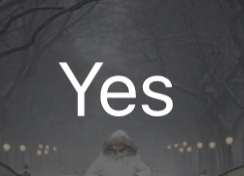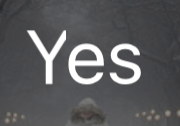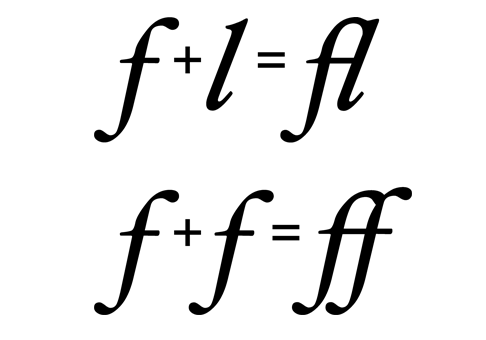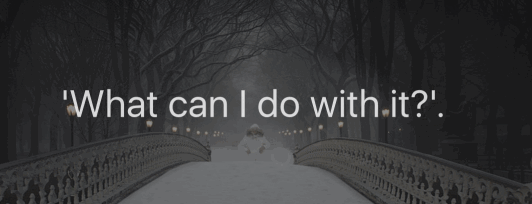前言
记得以前看到过一个很赞的文字效果的动画,类似于这样:

当时被惊艳到了,最近偶然间又再次见到,依然还是那么喜欢。假设我们现在需要实现这样的需求。一般碰到需求我们都会去 GitHub 上看看,俗称找轮子(GitHub 基本上只有你想不到的,就没有它没有的)。大多数情况下,没有问题。或者说有点小问题:轮子太多,无从下嘴。
选择
选轮子就像选姑娘,你不知道后面等着你的是什么 —–罪恶坑小程如是说
程序员江湖,每位大侠的武功和套路不尽一样,少林,武当,昆仑各门各派,百花争艳。实现轮子的思路自然也不一样。有的轮子高深晦涩难懂,功能强大,有的清晰明了,功能简单。不过有一点相同是,选错了就会被坑,只是坑大坑小问题。选轮子自然需要无比谨慎,既要匹配需求同时也要能在掉坑里的时候填上(废话,出 bug 了,你不填,谁填),要能 hold 住。然而填坑哪能那么简单呢,首先轮子实现思路,代码的结构,运行时序你要搞清楚吧,提供了哪些功能,没提供哪些功能,你要了解吧。基本上一个复杂点的轮子,研究下来就要好些时间了。这还不包括你开会,沟通,解 bug,喝茶,倒水,上厕所,抽烟,骂娘,吐槽产品需求的时间。所以,妹子们,不要问我们今天加不加班,要问今天能不能在你睡前下班。(项目快上线了,小程不加班谁加班。嗯哼。)
创造
如果能用代码扮演上帝话,苍老师的量产不是问题,就看产品经理定的需求是拟物还是扁平。—-罪恶坑小程如是说
既然选轮子的时间成本也不低,那有时候我们可以自己造一个轮子。其实写一个的好处也多,有成就感,写好了可以吹牛逼,写坏了填坑速度快。但问题是,以前没写过怎么办?没把握怎么办?比如我们现在需要实现上面的文字效果,但是又不知道怎么写,怎么办?
没关系,上帝创造世间也分了七步走,跟着这位带头大哥后面学,总不会错的。
开始
罗马不是一天建成的,毛片不是一次性拍完的 —-罪恶坑小程如是说
咦,好像扯得有点多了。对不起,现在开始正式拍(苍老师准备下,小程也准备下,Action):
1. 分解任务
通过简单观察我们可以马上知道,上面那个动画效果是通过对每个字符做动画完成的。而在 iOS 里,文本显示控件最常见和常用的是 UILabel。而 iOS 的 Explicit Animation 有 Properties Animation 和 keyframe Animation 两种。
但是 UILabel 控件没有提供对其 Text 中每个字符的控制的功能,我们需要改造下。既然要对每个字符做动画,那少不了需要frame,bounds,position,transform,这些属性。
这样看来我们需要两个武器:一个做排版功能的 framework,不用说,肯定是 TextKit。而另一个是能显示单个字符也拥有frame,bounds,position,transform等属性的类,很自然,我们想到CATextLayer。
2. 先解决文本布局
TextKit 里主要是三个类 NSTextStorage,NSLayoutManager,NSContainer。它们一起帮组我们解决文字布局,排版的工作。
-
NSTextStorage:NSMutableAttributedString的子类,持有文字内容,当字符发生改变时,通知NSLayoutManager对象
-
NSLayoutManager: 我们的男主角,从NSTextStorage里获取文字内容后,转换成对应的 glyph,根据NSTextContainer的 visible Region 显示 glyph。
-
NSContainer: 确定一个 region 来放置 text。这个 region 被NSLayoutManager用来决定哪里可以 break lines
不过可惜 UILabel 没有这三个类作为自己的属性对象,我们需要自己解决:
class TextAnimationLabel: UILabel,NSLayoutManagerDelegate {
let textStorage:NSTextStorage = NSTextStorage(string: "")
let textLayoutManager:NSLayoutManager = NSLayoutManager()
let textContainer:NSTextContainer = NSTextContainer()
}
|
除此以外我们还需要两个 Array 用来保存文本变换前的旧字符和变换后的新字符:
var oldCharacterTextLayers:[CATextLayer] = []
var newCharacterTextLayers:[CATextLayer] = []
|
因为我们需要用我们自己的 textStorage 对象,所以我们需要覆盖 text 和 attributedText 等属性。
override var text:String!{
get {
return super.text
}
set {
super.text = text
let attributedText = NSMutableAttributedString(string: newValue)
let textRange = NSMakeRange(0,newValue.characters.count)
attributedText.setAttributes([NSForegroundColorAttributeName:self.textColor], range: textRange)
attributedText.setAttributes([NSFontAttributeName:self.font], range: textRange)
let paragraphyStyle = NSMutableParagraphStyle()
paragraphyStyle.alignment = self.textAlignment
attributedText.addAttributes([NSParagraphStyleAttributeName:paragraphyStyle], range: textRange)
self.attributedText = attributedText
}
}
override var attributedText:NSAttributedString!{
get {
return self.textStorage as NSAttributedString
}
set{
cleanOutOldCharacterTextLayers()
oldCharacterTextLayers = Array(newCharacterTextLayers)
textStorage.setAttributedString(newValue)
self.startAnimation { () -> () in
}
self.endAnimation(nil)
}
}
|
当 TextStorage 的文本内容改变时,会触发一个通知 send textLayoutManager 以便重新布局排版。显然我们可以在排版布局完成后来为每个字符创建设置一个 CATextLayer,并设置相应的 frame 以便正确的显示内容。我们可以有个函数来完成计算。并且 layout finish 完成时调用。
//Mark:NSLayoutMangerDelegate
func layoutManager(layoutManager: NSLayoutManager, didCompleteLayoutForTextContainer textContainer: NSTextContainer?, atEnd layoutFinishedFlag: Bool) {
calculateTextLayers()
print("\(textStorage.string)")
}
//MARK:CalculateTextLayer
func calculateTextLayers()
{
}
|
接下来我们的主要想法,是找到 text 里每个 character 以及对应的 glyph rect. 然后用 character 和 glyph rect 创建 CATextLayer
首先我们要有一个空数组用来存放新的 CATextLayer。并且获取 textStorage 的 attributedText。
func calculateTextLayers()
{
newCharacterTextLayers.removeAll(keepCapacity:false)
let attributedText = textStorage.string
}
|
接下来我们要通过 LayoutManger 找到 TextContainer 的 used Rect,这样方便我们可以让文本垂直居中,就像普通的 Label 那样。
func calculateTextLayers()
{
newCharacterTextLayers.removeAll(keepCapacity:false)
let attributedText = textStorage.string
let wordRange = NSMakeRange(0, attributedText.characters.count)
let attributedString = self.internalAttributedText();
let layoutRect = textLayoutManager.usedRectForTextContainer(textContainer)
var index = wordRange.location
let totalLength = NSMaxRange(wordRange)
while index < totalLength {
...
}
}
|
现在我们开始迭代处理文本里的每个字符,创建一个 glyphRange 并且用这个 glyphRange 找到对应的 character,然后我们将 glyph index 丢给 LayoutManager 得到 textContainer,再用 container 和 glyphRange 取得 glyphRect(这里需要注意下 kerning 的问题)。
let glyphRange = NSMakeRange(index, 1)
let characterRange = textLayoutManager.characterRangeForGlyphRange(glyphRange, actualGlyphRange: nil)
let textContainer = textLayoutManager.textContainerForGlyphAtIndex(index, effectiveRange: nil)
var glyphRect = textLayoutManager.boundingRectForGlyphRange(glyphRange, inTextContainer: textContainer!)
|
最终我们还需要注意的就是 glyph 的 kerning,如果 kerningRange.location == index,我们需要将前一个 textLayer 取出来调整其 Rect 的宽度至新的 glyphRect 的最右边,保证 glyph 不会被裁切掉(可以对比下面两张图片)


let kerningRange = textLayoutManager.rangeOfNominallySpacedGlyphsContainingIndex(index)
if kerningRange.location == index && kerningRange.length > 1 {
if newCharacterTextLayers.count > 0 {
// 如果前一个 textlayer 的 frame.size.width 不变大的话,
// 当前的 textLayer 会遮挡住字体的一部分,比如 “Yes” 的 Y 右上角会被切掉一部分
let previousLayer = newCharacterTextLayers[newCharacterTextLayers.endIndex - 1]
var frame = previousLayer.frame
frame.size.width += CGRectGetMaxX(glyphRect) - CGRectGetMaxX(frame)
previousLayer.frame = frame
}
}
|
这里关于 kerning 和 glyph 要多说一点。先来说下 glyph,简单来说 glyph 是表示一个 character 的具体样式 , 但他们却不是一一对应的关系,比如一个字母 “A” 可以有不同的写法来表示例如:

除此以外,还有这种情况:

上面是的 “ff” 虽然是两个 character,但是 glyph 却是一个。
不过不用担心,强大 LayoutManager 提供了两个方法帮助我们通过一个找到对应另外那个。
func characterIndexForGlyphAtIndex(_ glyphIndex: Int) -> Int
func glyphIndexForCharacterAtIndex(_ charIndex: Int) -> Int
|
现在我们说下 kerning。通常,在水平排布的文本中,glyph 都是一个挨着一个放置的,但是在某些时候为了让文本的可读性更好,看上去更加优雅美观,一个字形和另外一个字形之间可能会稍微的错位下,比如下面这种情况:

这也是上面为什么”Y“会出现显示不全的原因了。
接下来就比较简单了,创建 Textlayer, 设置垂直居中,添加到数组当中,index += characterRange.length,开始下次循环
glyphRect.origin.y += (self.bounds.size.height/2)-(layoutRect.size.height/2)
let textLayer = CATextLayer(frame: glyphRect, string: attributedString.attributedSubstringFromRange(characterRange));
layer.addSublayer(textLayer);
newCharacterTextLayers.append(textLayer);
index += characterRange.length
|
3. 动画实现
上面我们解决了字符排版的问题,接下来动画的实现就相对的容易了,仔细观察那个动画,很容易得出主要是对 opacity 和 transform 两个属性做属性动画,opacity 让每个字体逐渐显示和逐渐消失,而 transform则做了两种变形,一种是往下移动,另外一种是旋转。用 CABasicAnimation 可以解决单个属性动画,而 CAAnimationGroup 则帮我们解决多个动画叠加的复合效果。
func groupAnimationWithLayerChanges(old olderLayer:CALayer, new newLayer:CALayer)
-> CAAnimationGroup? {
var animationGroup:CAAnimationGroup?
var animations:[CABasicAnimation] = [CABasicAnimation]()
if !CATransform3DEqualToTransform(olderLayer.transform,
newLayer.transform) {
let basicAnimation = CABasicAnimation(keyPath: "transform")
basicAnimation.fromValue = NSValue(CATransform3D: olderLayer.transform)
basicAnimation.toValue = NSValue(CATransform3D: newLayer.transform)
animations.append(basicAnimation)
}
if olderLayer.opacity != newLayer.opacity {
let basicAnimation = CABasicAnimation(keyPath: "opacity")
basicAnimation.fromValue = olderLayer.opacity
basicAnimation.toValue = newLayer.opacity
animations.append(basicAnimation)
}
if animations.count > 0 {
animationGroup = CAAnimationGroup()
animationGroup!.animations = animations
}
}
|
这里需要注意一个问题,就是隐式动画的问题,Core Animation 基于一个假说,就是屏幕上的任何东西都可以 (或者可能) 做动画,我们平时在写代码时应该有这种印象就是你只是 layer 设置了一个值,没有添加动画,但是你会看到一个平滑过渡的显示效果而不是非常突兀的变化。这就是隐式动画。当我们改变一个属性时,Core Animation 帮我们做了一个动画,动画时间取决于当前 NSTransaction 的设置,而动画类型取决于图层行为。
这里有个有趣的东西,多说一点,就是当我们对 UIView 关联的图层做动画而不是一个单独的图层做动画,比如
func changeColor()
{
CATransaction.begin();
CATransaction.setAnimationDuration(1.0)
CGFloat red = CGFloat(arc4random() / (CGFloat)INT_MAX);
CGFloat green = CGFloat(arc4random() / (CGFloat)INT_MAX);
CGFloat blue = CGFloat(arc4random() / (CGFloat)INT_MAX);
self.layerView.layer.backgroundColor = UIColor.(colorWithRed:red green:green blue:blue alpha:1.0).CGColor;
CATransaction.commit();
}
|
图层的颜色瞬间切换到新的值,而不是之前的平滑过渡,隐式动画似乎给关闭了。
我们知道 UIView 和 CALayer 最重要的关系就是 UIView 是 CALayer 的 delegate,
当我们改变 CALayer 的属性时,它会调用 func actionForKey(_ event: String) -> CAAction?
这个方法,接下来发生的事情在官方文档里都有写,实际上是如下几步:
-
If the layer has a delegate that implements the actionForLayer:forKey: method, the layer calls that method. The delegate must do one of the following:
-
Return the action object for the given key.
-
Return the NSNull object if it does not handle the action.
-
The layer looks in the layer’s actions dictionary for a matching key/action pair.
- The layer looks in the style dictionary for an actions dictionary for a matching key/action pair.
- The layer calls the defaultActionForKey: class method to look for any class-defined actions.
UIView 作为它关联图层的 Delegate,实现了 actionForLayer(_ layer: CALayer, forKey event: String) -> CAAction? ,当不在一个动画块中,UIView 返回 nil,而在动画块中则返回一个非空值
print("OutSide:\(self.view.actionForLayer(self.view.layer, forKey: "backgroundColor"))")
UIView.beginAnimations(nil, context: nil)
print("InSide:\(self.view.actionForLayer(self.view.layer,
forKey: "backgroundColor"))")
UIView.commitAnimations()
|
显示结果如下
OutSide:Optional(<null>)
InSide:Optional(<CABasicAnimation: 0x7f7f93ff81b0>)
|
当然返回 nil 并不是禁用隐式动画的唯一方法,下面这样也行
CATransaction.setDisableActions(true)
|
那为什么说这个问题呢?因为我们在对每个字符做动画的时候需要先将隐式动画关闭,否者将会做两次动画,比如下面这样:

那么,我们先生成一份 oldlayer, 然后改变相应的属性,生产新的 newLayer。然后创建相应的动画组,添加显式动画。
let olderLayer = animationObjc.animatableLayerCopy(layer)
CATransaction.begin()
CATransaction.setDisableActions(true)
newLayer = effectAnimationClosure(layer: layer)
CATransaction.commit()
var animationGroup:CAAnimationGroup?
animationGroup = groupAnimationWithLayerChanges(old: olderLayer, new: newLayer!)
layer.addAnimation(textAniamtionGroup, forKey: textAnimationGroupKey)
|































 574
574

 被折叠的 条评论
为什么被折叠?
被折叠的 条评论
为什么被折叠?








